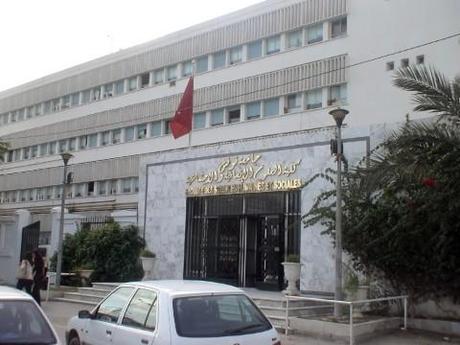
Like many Arab Spring countries, Tunisia is experiencing a “youth bulge,” but neither that nor the lingering effects of the European financial crisis can entirely explain Tunisia’s high rate of youth unemployment. Youth unemployment in Tunisia is the result of structural issues in its education system and its labor market, as well as an ingrained understanding of “employment” based on decades of social and political development.
While talks between Tunisia’s political parties dominate the headlines, the emotional political debates going on right now belie troubling economic conditions that could prove just as debilitating to the country’s democratic transition.
Today, the unemployment rate in Tunisia among young people with a university degree is 30 percent, more than twice the 2005 rate of 14 percent. The spike in overall unemployment (now at 17 percent) is partly explained by the larger political and economic situation. Since Tunisia’s 2011 revolution, the economy has had a hard time regaining its pre-Arab spring growth rates. Al Qaeda’s presence in North Africa has grown in the last few years. Instability in neighboring Libya has only added to anxiety over the security situation in Tunisia, a country traditionally boasting healthy tourism revenues. Finally, demand for Tunisian exports has dried up in the European Union, Tunisia’s most important trade partner. These are well-known elements of Tunisia’s post-revolution narrative.
That’s just part of the equation, though. The European market may right itself, the Tunisian government may reassert its ability to secure the country, but Tunisia will still face the nagging issue of high unemployment among its young graduates. That 30 percent unemployment rate among recent graduates isn’t a result of just cyclical unemployment—from regional and global fluctuations—but structural unemployment.
According to the most recent Global Competitiveness Index from the World Economic Forum, the Tunisian labor market has failed to efficiently marshal its young talent to create jobs and growth. A seemingly concise diagnosis, but, when unpacked, it reveals a few phenomena that have combined for the perfect storm of youth unemployment: a gap between labor supply and demand, a prohibitively rigid labor market, and lingering cultural assumptions about self-employment and entrepreneurship.
Since the 1960s, the Tunisian government has poured millions of dollars into its education system—to great effect, at least on paper. The Tunisian higher education system is one of the best in the Middle East and North Africa. More Tunisian students are pursuing higher degrees than ever before. (And, by the way, for the first time since the government began investing heavily in education, a majority of them are women.)
Still, Tunisian companies cannot find qualified job candidates—there is a skills gap. Business owners lament that a university education simply does not prepare students for the jobs that are available. Diplomas they may have, but technical skills they lack. An example: Tunisian colleges have churned out hundreds of engineers with training in math and science, but hiring managers at Tunisia’s industrial and manufacturing firms are looking for candidates with experience in applied technical work.
Another factor in youth unemployment in Tunisia, again made very clear by this year’s Global Competitiveness Index, is a rigid labor market. Out of 138 countries, Tunisia ranked 83rd in overall competitiveness. But its score for labor market efficiency tells a much darker story: Tunisia’s labor market was ranked 132 out of 138.
Respondents cited “restrictive labor regulations” as one of the most problematic factors for doing business, right ahead of “government instability/coups.” Simply put, the costs of hiring and firing are too high. Tunisia’s employers pay one of the highest rates of employer contribution to non-wage benefits in the world. What’s more, firms often don’t feel free to fire employees, fearing a lawsuit from the employee’s union. The result is a decrease in worker productivity. Those who are already employed have ultimate job security; they don’t need to compete with the thousands of job seekers in the market.
Despite what you’ve just read about the skills gap and the labor market, there may be something even more fundamental affecting youth employment in Tunisia. There are still jobs available in Tunisia, not to mention room for entirely new businesses. But the newest members of the workforce, especially those with college degrees, may not be open to these opportunities. Prior to the December 2010 revolution, Tunisians lived through two consecutive thirty-year autocracies, both of which supported a substantial bureaucracy that employed a large part of Tunisia’s educated middle class.
But the post-revolution government—whoever may yet lead it—can’t offer its young graduates the government jobs they were taught to expect. Forced to look elsewhere for work, and facing the obstacles already mentioned, those who do start their own businesses see it as a temporary measure, something to support them until they find a “real job.” These youth don’t see themselves as entrepreneurs. They still expect to find something “more stable,” and so they are less likely to invest in or try to expand their businesses. And if they do want to expand and hire new employees…Well, we already talked about that.
The skills gap, a rigid labor market, a reticence to pursue nontraditional avenues for employment—all of these issues predate the 2011 revolution, and none is going to be an easy fix. There’s a reason it’s called “structural” unemployment. But, two years after the revolution, these issues weigh heavily on the transitioning democracy. Efforts to address structural unemployment sooner rather than later could have far-reaching benefits for Tunisia’s graduates, current students, and economy as a whole. To do that, all of the different players will have to have a voice: policymakers, of course, but also educators and administrators, job seekers, and the private sector.
Margaret Bohlander is Program Assistant for the Middle East and North Africa at CIPE.

